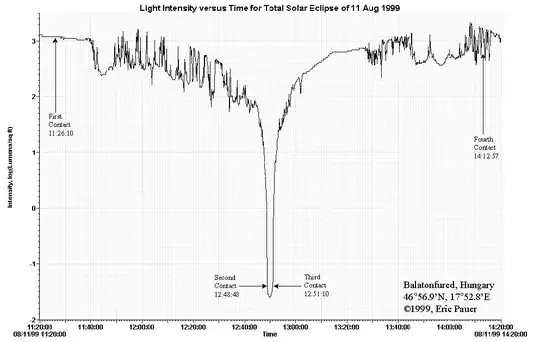I was looking at eclipse footage and I noticed that it doesn't get any noticeably darker until the very end when it suddenly all the light is gone. As the moon blocks out the Sun, I would expect that the brightness would gradually decrease as less of the Sun became visible (e.g. 50% as bright when the Moon covers half of it) however judging from all the videos out there this is not true! I took a look at the Wikipedia article, and it says:
"Partial eclipses are virtually unnoticeable, as it takes well over 90% coverage to notice any darkening at all."
"Even at 99% it would be no darker than civil twilight."
Why would this be the case?
I also found this diagram that may help illustrate my question:
I would expect the graph to be more of a linear shape rather than being so exponential!
